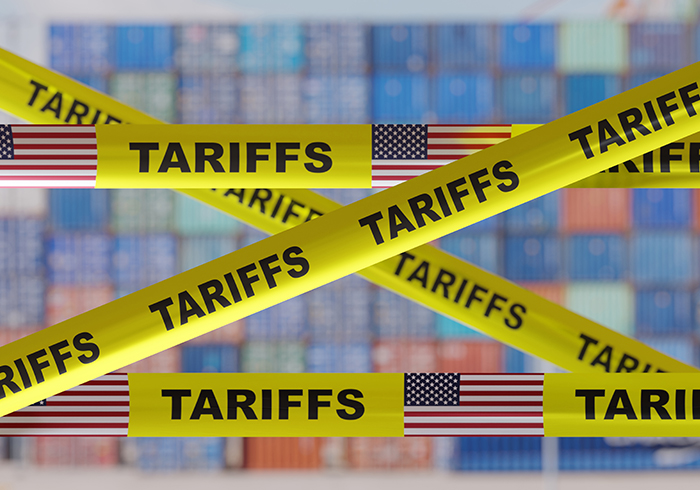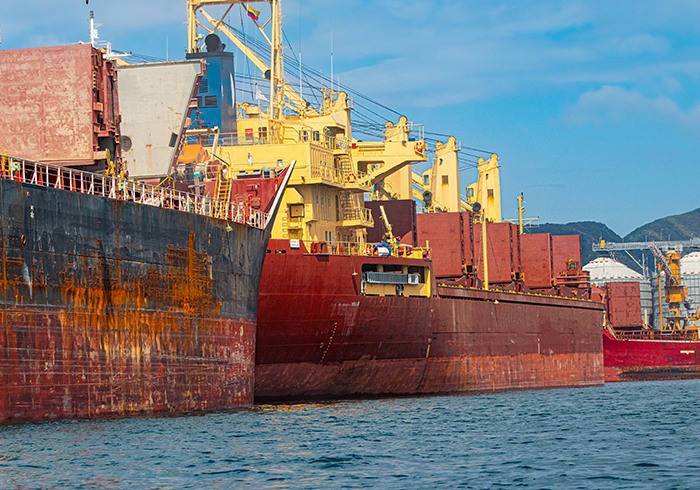The trade alliance between Russia and China is becoming stronger by the year, but Laura Benitez asks whether the countries’ banking systems can withstand these growing trade volumes.
In June 2012, the presidents of Russia and China made a pact to double their bilateral trade from US$83.5bn in 2011 to US$200bn by 2020; a target that could be well within reach if the countries’ trade volumes continue to pick up speed.
Russia’s trade relationship with China is by far the strongest bond within the Brics countries. Russia’s mutual trade turnover with the Brics has so far reached around US$100bn –nearly one-eighth of the country’s total foreign trade (US$764bn), while trade with China alone totalled US$83.5bn in 2011 and grows annually by more than 30%.
Collaboration efforts
Russia’s VTB Bank signed a co-operation agreement in December with China Merchants Bank to develop bilateral trade and investment solutions between the two countries. As part of the deal, the banks have agreed to work together on exchanging their ruble and renminbi currencies, while developing investment banking partnerships, interbank lending collaboration and trade finance operations.
A VTB official tells GTR that the deal is expected to create a more favourable environment for the expansion of trade contacts between Russia and China.
The agreement is also set to boost interaction between China Merchants Bank and VTB Bank’s branch in Shanghai, particularly with foreign exchange and deposit transactions, as well as deals involving national currencies.
“VTB’s branch in Shanghai is expanding transactions in national currencies; its trading in the ruble/yuan currency pair totalled R37bn (US$1.2bn) from 2011 to 2012, and the number of participating Chinese banks is constantly on the rise,” the VTB spokesperson adds.
As another sign of the strengthening trade union, Russia recently inked another round of agreements with China as part of its ongoing energy pact, initially signed in 2009. During the ninth China-Russia energy negotiators’ meeting in December 2012, the two countries signed a memorandum of understanding for co-operation on energy market assessment and the coal sector, as well as another agreement on electricity supply.
Russia’s trade ties
As trade ties between China and Russia continue to strengthen, Russian banks seem well prepared to take on the growing volumes.
According to Alexander Meshcheryakov, director, head of international finance department at Promsvyazbank, Russia’s banks have been gradually increasing their capacity for trade finance over the last few years.
“Trade finance in Russia is on its way to recovery from the crisis of 2008. In terms of the volumes of trade finance
we took a very heavy hit during the crisis. And if you look at the volumes of this year’s trade finance business we have been very active. I would say that our volumes for this year were closer to those of 2007, although we’re still not reaching volumes from early 2008, so we’re still lagging slightly here.
“But despite of all of the crises in Europe and possible signs of it elsewhere, we’re still seeing some good interest from the banks in Europe and the US. Promsvyazbank’s trade finance portfolio is growing at a much faster rate, close to 30%,” Meshcheryakov confirms.
Kevork Kahanian, Citi’s head of trade finance for Russia and the CIS agrees that trade finance is becoming a more popular method of funding, noting that for Russian corporates in the current market environment, securing bank financing can be very expensive, even for the shorter-term revolving lines.
“This is where trade finance can shine because of its very attractive rates. This is especially true for exporters, for which it is easy to meet the trade finance requirements and to obtain funding because they have very transparent flows of activity, such as contracts and shipments.”
He says that for Citi, one part of the business that is performing particularly well is supplier-distributor finance, which allows the bank to maintain a substantial portfolio of trade loans, providing them with a continuous line of business.
“As long as the economy is relatively healthy the opportunity for supplier finance is phenomenal.”
Kahanian also explains that although Russian corporates have struggled in the past with rising funding costs, prices have now reached a plateau. “Even if margins have grown by 50% it’s not going to materially change the behaviour of how people do business. It affects all forms of financing but less so trade finanvce since the cost of financing does not represent the overall cost of trade.”
Although Russian banks seem well on their way to increasing their trade finance capacity, several obstacles still stand in the way of Russia’s goal to double its bilateral trade with China by 2020.
Chinese risk appetite
According to Dmitry Minaev, managing director, international trade finance at Alfa Bank, Russian corporates are facing major difficulties in obtaining finance from Chinese banks.
“We are able to finance the Chinese trade of our customers without much help from the US and European banks; but if our customers want to approach the Chinese banks for financing their trade into China it’s a different story. They are definitely not ready to take on as much risk as we are. It’s a slightly different situation with the state-owned banks as they have a bit more risk appetite.”
Another stumbling block is the lack of support from Chinese export credit agencies (ECAs). Meshcheryakov explains that obtaining insurance on trade transactions between Russia and China has always been a sore point for a lot of Russian banks.
This lack of ECA support is not just hampering Russia’s chances of growing its trade volumes with China, but also has a wider impact on the Brics.
“Local ECAs and government banks such as Sinosure and China Exim are not actively involved in the support of trade finance between the Brics countries.
As a result most of the Brics financing is running through third countries like the US and Europe. It’s not logical and it’s not supporting the development of the Brics.”
Minaev agrees, adding that insurance from China’s ECA Sinosure, which is vital in closing many deals, is not only difficult to obtain, but goes through a procedure that “is still very unclear”.
“We don’t know how much time it will take for Sinosure to decide on accepting our risk, we won’t know the costs until late into the deal, and we don’t know exactly which type of solution we can offer our customers. But it’s a different story if the same transaction is brought to Sinosure by a Chinese exporter; it’s much easier to get the deal insured.”
One thing is clear, if Russia and China want to hit the US$200bn trade mark by 2020 then China’s banking sector and trade insurers have a lot of work to do. However, Meshcheryakov is hopeful that Russia’s newly-launched ECA Exiar will step up and help Russia not only with Russia trade, but with its relations across the Brics.
“Exiar will become more of an active player in the intra-Brics market. We are currently working with them on a few deals, and they’ve proved to be very flexible in their approaches and open about what they want and require from deal participants.”







